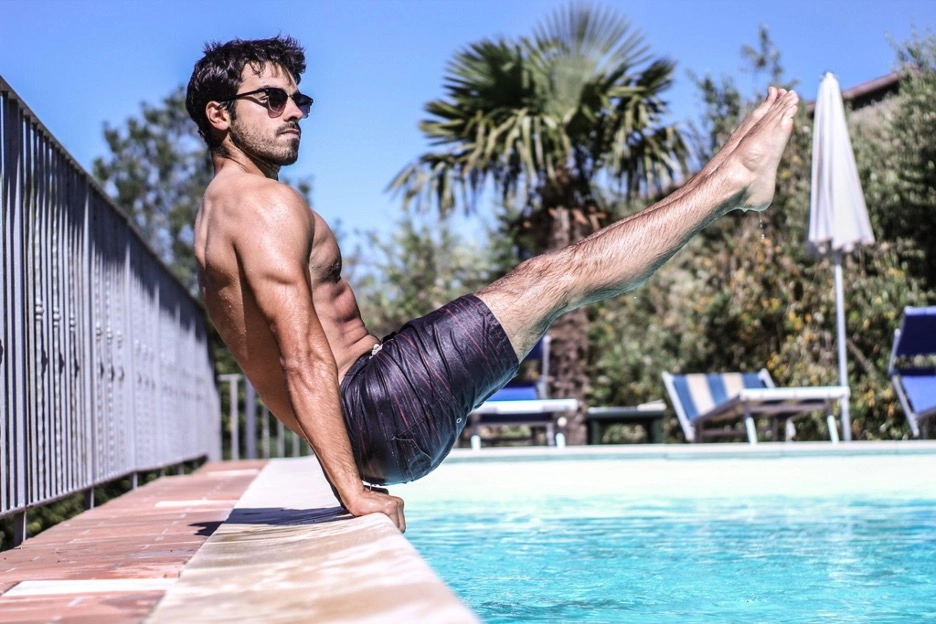





We all know that swimming is one of the best full-body workouts you can do. Whether you’re looking to lose weight, improve fitness, or just enjoy being in the water, swimming helps burn calories efficiently while being easy on your joints. But how do you measure the number of calories you burn in a swim session? And more importantly, how can you maximise your calorie burn?

Let the experts from Aqua Artist Swimming School answer your questions! In this blog, we explore everything from the science behind calorie burning in swimming to practical ways to make your workouts more effective. Let’s dive in:
To learn how many calories you burn by swimming, you need to know how to estimate the energy your body uses during a physical activity. The unit we use for this is called MET (aka, Metabolic Equivalent of Task).
The MET value represents the energy expenditure of an activity relative to rest. One MET means a given activity burns one calorie per Kg per hour, which means the energy used when sitting still.
Swimmers know that swimming can feel harder compared to running and cycling as it burns more calories as water resistance is greater than air resistance. This makes it an ideal exercise for those with joint issues, as many are encouraged to learn to swim to lose weight without putting stress on their joints.
However, different swimming strokes have different MET values based on their intensity levels.
MET Values for Swimming Strokes:
Here’s a quick view of the MET values for some of the basic swimming strokes as per the report from the Arizona State University Compendium of Physical Activities:
| Swimming Stroke | MET Value |
| Freestyle (moderate effort) | 8.3 |
| Backstroke (moderate effort) | 4.8 |
| Breaststroke (moderate effort) | 5.3 |
| Butterfly | 13.8 |
| Treading Water (moderate effort) | 3.5 |
You need to know your weight and how many METs an activity costs to calculate the number of calories you’ve burned during that activity. Light-intensity activities typically have MET values below 3, moderate-intensity activities range from 3 to 6, and vigorous-intensity activities have MET values above 6.
Here’s the formula to estimate the calories burned:
Calories burned per minute = (MET × Body Weight in kg × 3.5) / 200
For example, if you weigh 70kg and swim freestyle at a moderate pace (8.3 METs) for 30 minutes:
Calories burned per minute = (8.3 × 70 × 3.5) / 200 = 10.18
Total calories burned = 10.18 × 30 = 305.4 calories
Of course, these numbers vary based on your effort, rest breaks, and technique, but this formula provides a useful estimate.
Do you feel like this formula is quite complicated? The good news is that various tools can help you easily determine the calorie burn.
Online Calculators:
Several online tools can help you estimate your calorie burn accurately:
Omni Calculator's Swimming Calorie Calculator
Just Swim's Calorie Cruncher
You can input your weight, swimming style, and duration to get an estimate tailored to you via these calculators.
Wearable Fitness Trackers:
Modern smartwatches like Apple Watch, Garmin, and Fitbit can estimate calories burned while swimming by tracking your heart rate and movement. While not 100% accurate, they provide real-time feedback on your intensity and effort.
Now that you understand how to calculate calorie burn, let’s look at ways to make your swimming workouts more effective.
Instead of swimming at a steady pace, try high-intensity intervals. For example:
Swim fast for 30 seconds, then recover at a slow pace for 30 seconds.
Repeat for 15-20 minutes to increase calorie burn.
This method, known as High-Intensity Interval Training (HIIT), is known to be one of the best ways to burn fat and improve cardiovascular fitness.
Different strokes engage different muscles, preventing workout monotony and increasing calorie burn. Try mixing up different strokes:
Start with freestyle for endurance.
Add butterfly for explosive power.
And then you can use breaststroke to focus on controlled breathing.
If you're looking to refine your techniques and maximise your workouts, you can join our Auckland swimming school, where we conduct expert-led adult swimming classes designed to help you improve efficiency, build endurance, and get the most out of every session with various swimming techniques.
A 15-minute swim is great, but 30-45 minutes will yield better results. If you’re short on time, increase intensity rather than duration.
With more resistance in the water, you’ll burn more calories. Use tools like kickboards, hand paddles, or resistance bands to improve muscle engagement. This will make your workout more challenging, thus you burn more.
To see significant calorie-burning benefits, aim for 3-5 swim sessions per week. The best way you can do this is by following a swimming lesson. Remember, consistency is key!
Swimming is a fantastic way to burn calories, tone muscles, and improve fitness, but understanding how many calories you burn can help you structure your workouts more effectively. By using the MET formula, online calculators, and fitness trackers we’ve mentioned above, you can get a rough estimate and adjust your sessions accordingly.
If you’re looking to improve your swimming technique, burn more calories efficiently, and make the most of your time in the pool, we, at Aqua Artist Swimming School are here to help! Our expert instructors provide personalised training to match your fitness goals. Join Aqua Artist Swimming School today and take your swimming skills to the next level. Contact us now to book your first session!